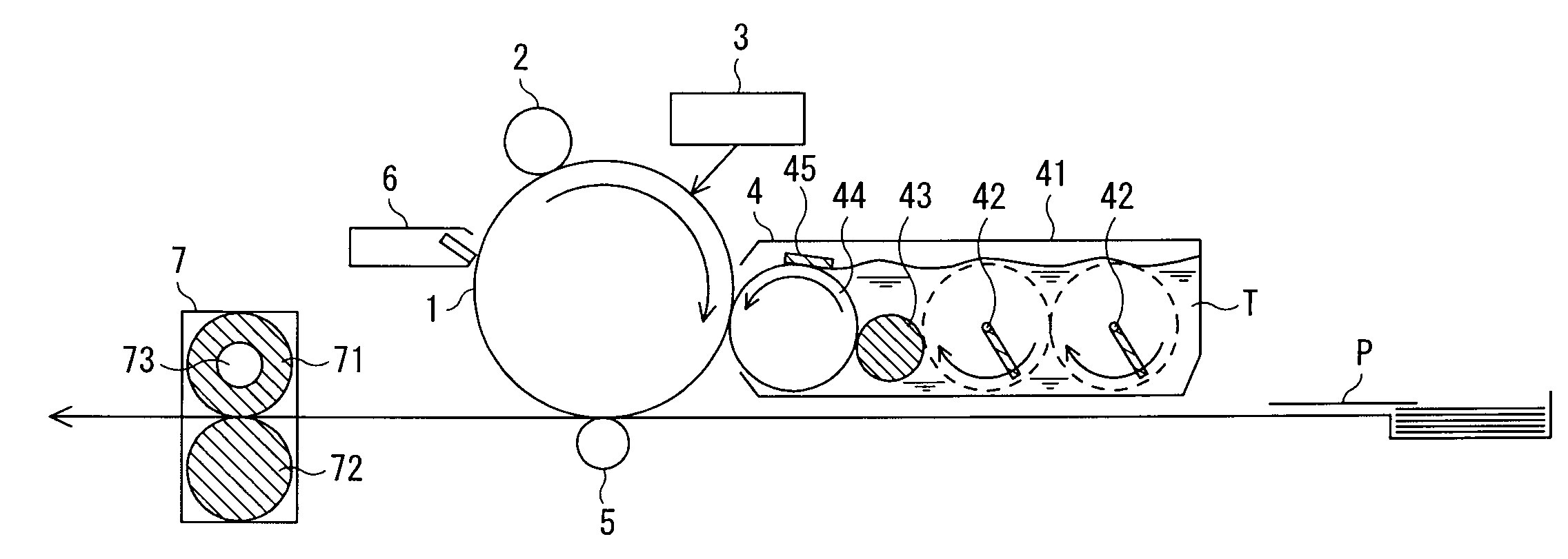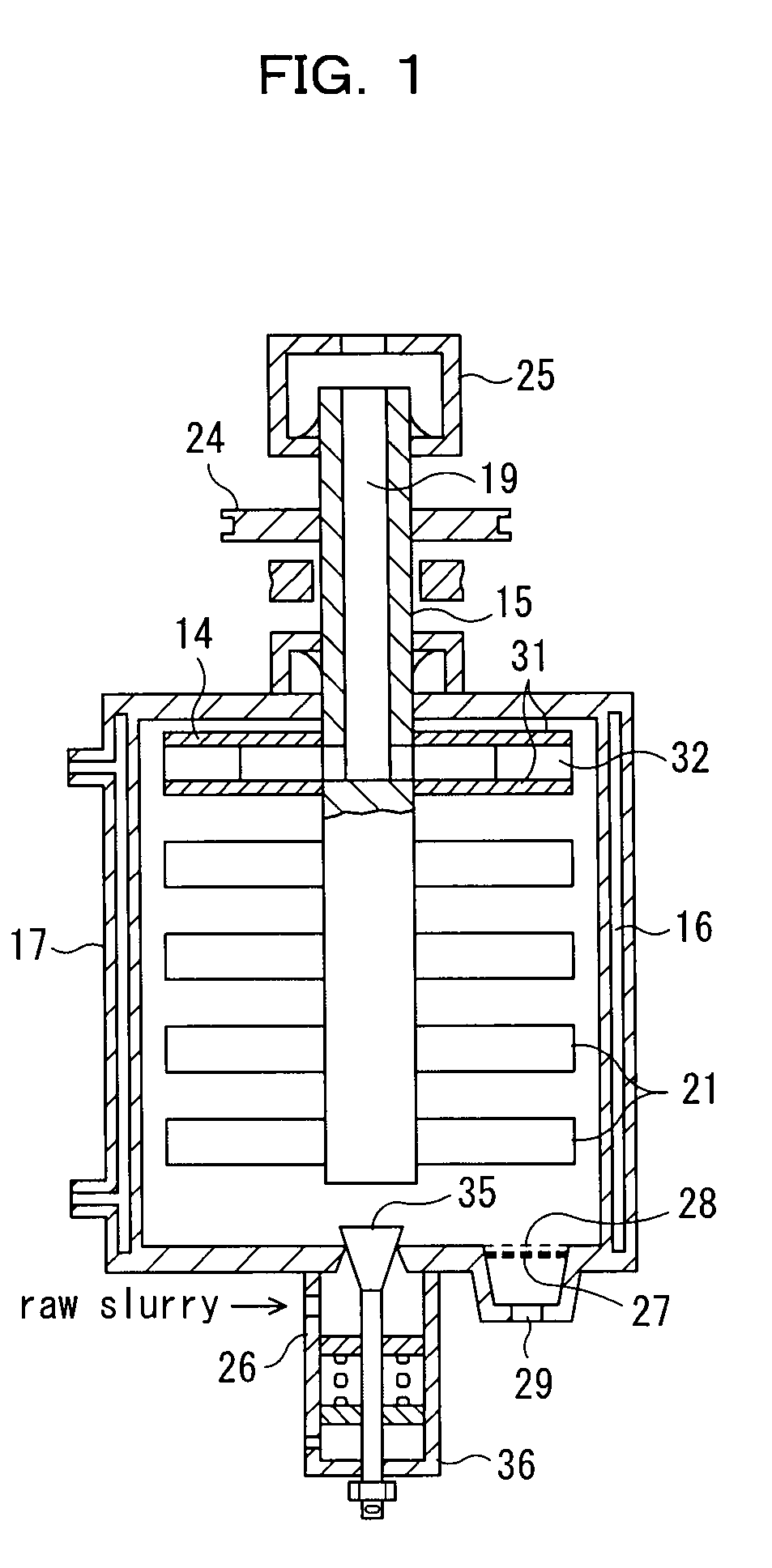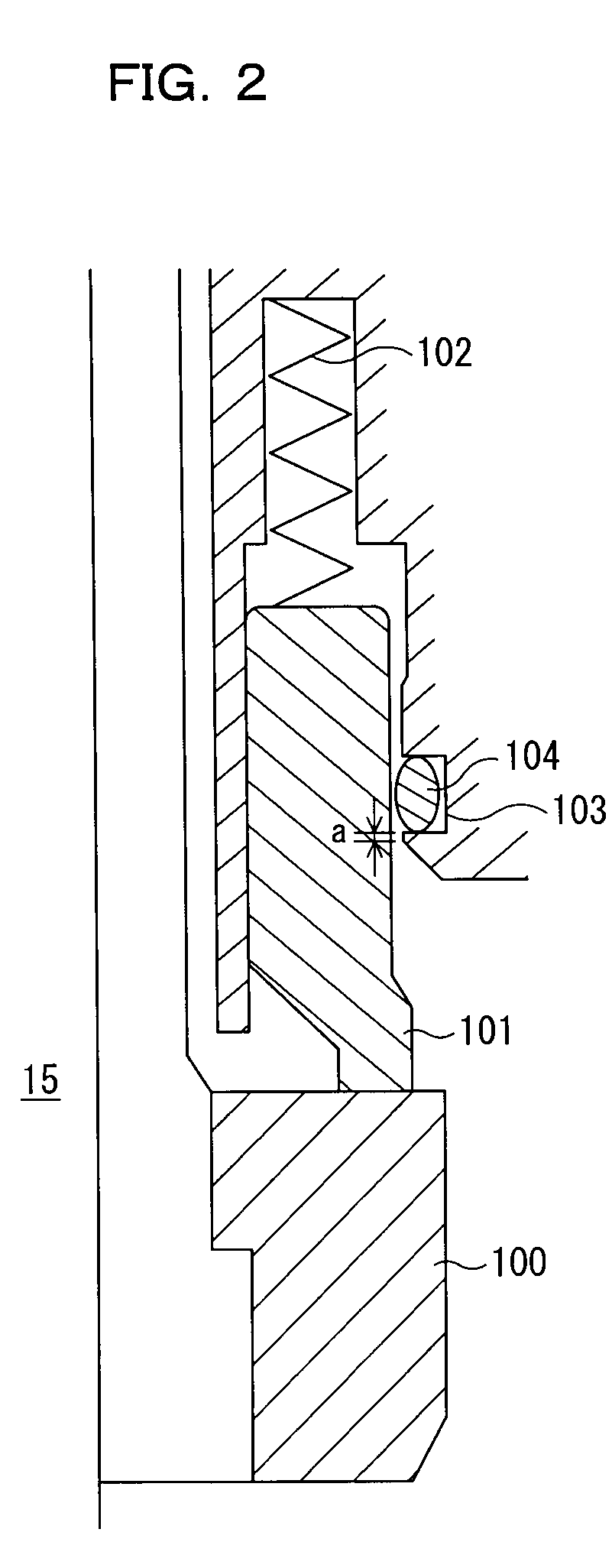Electrophotographic photoreceptor, image-forming apparatus, and electrophotographic cartridge
a photoreceptor and image-forming technology, applied in the direction of electrographic process, instruments, corona discharge, etc., can solve the problems of photosensitive layer surface wear, mechanical damage of the photoreceptor, and various defects in the image formed with the photoreceptor, etc., to achieve high sensitivity
- Summary
- Abstract
- Description
- Claims
- Application Information
AI Technical Summary
Benefits of technology
Problems solved by technology
Method used
Image
Examples
first embodiment
of Preferable Dispersion Apparatus
[0293]Among the aforementioned wet agitating ball mills, particularly preferred is one including a cylindrical stator, a slurry supplying port disposed at one end of the stator, a slurry discharging port disposed at the other end of the stator, a rotor for agitating and mixing a dispersion medium packed in the stator and slurry supplied from the supplying port, and a separator that is rotatably connected to the discharging port and separates the dispersion medium and the slurry by the centrifugal force to discharge the slurry from the discharging port.
[0294]Here, the slurry contains at least metal oxide particles and a dispersion solvent.
[0295]Now, the structure of this wet agitating ball mill will now be described in detail.
[0296]The stator is a tubular (usually, cylindrical) container having a hollow portion and is provided with a slurry supplying port at one end and a slurry discharging port at the other end. In addition, the hollow portion of th...
second embodiment
of Preferable Dispersion Apparatus
[0325]Wet agitating ball mills other than the above-described wet agitating ball mill can be used in the dispersion step. For example, in order to ensure the separation of a dispersion medium from dispersion slurry, a wet agitating mill by a screen separation system is superior to that by a gap, slit, or centrifugation system. A wet agitating mill by the screen separation system has a screen for separating a medium, and slurry and a dispersion medium are separated by filtration through this screen. The wet agitating mill by the screen separation system has an advantage in that it can constantly separate metal oxide particles having a particle diameter distribution according to the present invention from a dispersion medium. In particular, in the case of use of a fine dispersion medium with a 5 to 100 μm diameter, the separation of the dispersion medium by a wet agitating mill of the gap system or the slit system is practically very difficult. Furthe...
examples
[0744]The present invention will now be described in further detail with reference to Examples and Comparative Examples, but is not limited thereto within the scope of the present invention. In the description of Examples, the term “part(s)” means “part(s) by weight” unless otherwise specified, and the term “%” means “mass %” unless otherwise specified. In the description of Examples, the term “Me” denotes a methyl group.
PUM
| Property | Measurement | Unit |
|---|---|---|
| Length | aaaaa | aaaaa |
| Length | aaaaa | aaaaa |
| Fraction | aaaaa | aaaaa |
Abstract
Description
Claims
Application Information
 Login to View More
Login to View More - R&D
- Intellectual Property
- Life Sciences
- Materials
- Tech Scout
- Unparalleled Data Quality
- Higher Quality Content
- 60% Fewer Hallucinations
Browse by: Latest US Patents, China's latest patents, Technical Efficacy Thesaurus, Application Domain, Technology Topic, Popular Technical Reports.
© 2025 PatSnap. All rights reserved.Legal|Privacy policy|Modern Slavery Act Transparency Statement|Sitemap|About US| Contact US: help@patsnap.com



